Remembering D-Day 80 years later: Biden, world leaders pay respects
What is D-Day? An explainer on the massive WWII invasion of Normandy
On June 6, 1944, the largest air, land and sea invasion in military history took place on the Normandy coast of France.
June 6, 2024, marks the 80th anniversary of one of the largest air, land and sea invasions in military history. The Battle of Normandy, often referred to as D-Day and codenamed "Operation Overlord," has been described by historians as a major turning point for the Allied forces in World War II.
The nearly 160,000 Allied troops, made up of American, British and Canadian forces, landed on the beaches of Nazi-occupied France and were then able to push inland to Western Europe.
The bravery displayed by these troops has been depicted in many books and films, including "Saving Private Ryan" and the book-turned-HBO miniseries "Band of Brothers."
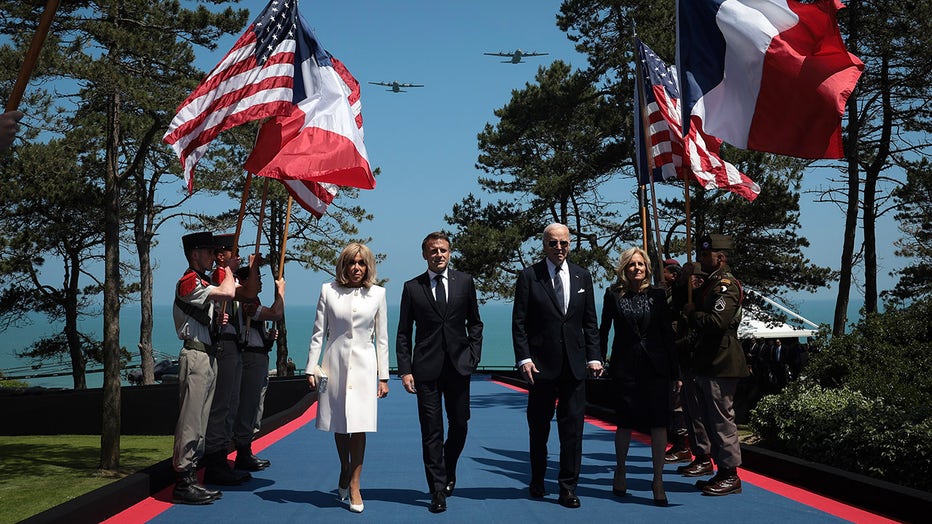
U.S. President Joe Biden and first lady Jill Biden walk with French President Emmanuel Macron and his wife Brigitte Macron while arriving at a ceremony marking the 80th anniversary of D-Day at the Normandy American Cemetery on June 06, 2024 in Collev
RELATED: Haunting art installation marks D-Day anniversary: See the pics
What does "D" in D-Day mean?
What does "D" stand for in D-Day? It depends on who you ask.
Some say it stands for designated day, decision day, doomsday or even death day, according to the U.S. military.
Others also said it merely stands for "Day," as in Day-Day.
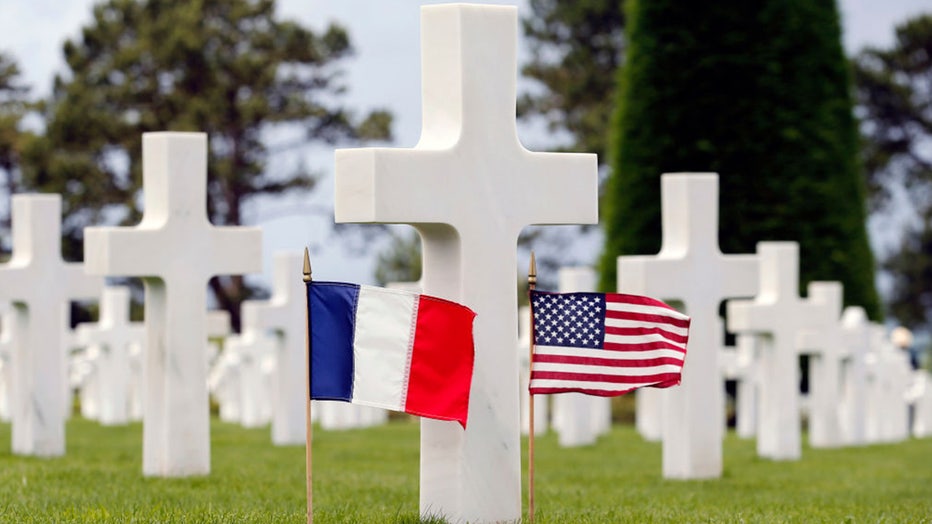
FILE - A French flag and an US flag sit on the grave of a soldier during commemorations marking the 73th anniversary of D-Day, the June 6,1944 landings of Allied forces in Normandy at the American cemetery on June 06, 2017 in Colleville-sur-Mer, Fran (Chesnot/Getty Images)
There have been other instances in history which utilized D-Day as a coded designation for the day of any important invasion or military operation, the U.S. military said.
Referencing Stephen Ambrose’s book, "D-Day, June 6, 1944: The Climactic Battle of World War II," the U.S. Army’s first use of D-Day was in 1918.
"For military planners (and later historians), the days before and after a D-Day were indicated using plus and minus signs: D-4 meant four days before a D-Day, while D+7 meant seven days after a D-Day," according to the U.S. Army website.
An unknown person allegedly wrote to General Dwight D. Eisenhower, the Allied supreme commander for Operation Overlord, and asked what the "D" meant.
His executive assistant at the time, Brigadier Gen. Robert Schultz answered:
"General Eisenhower asked me to respond to your letter. Be advised that any amphibious operation has a 'departed date'; therefore the shortened term 'D-Day' is used," the Army’s website reads.
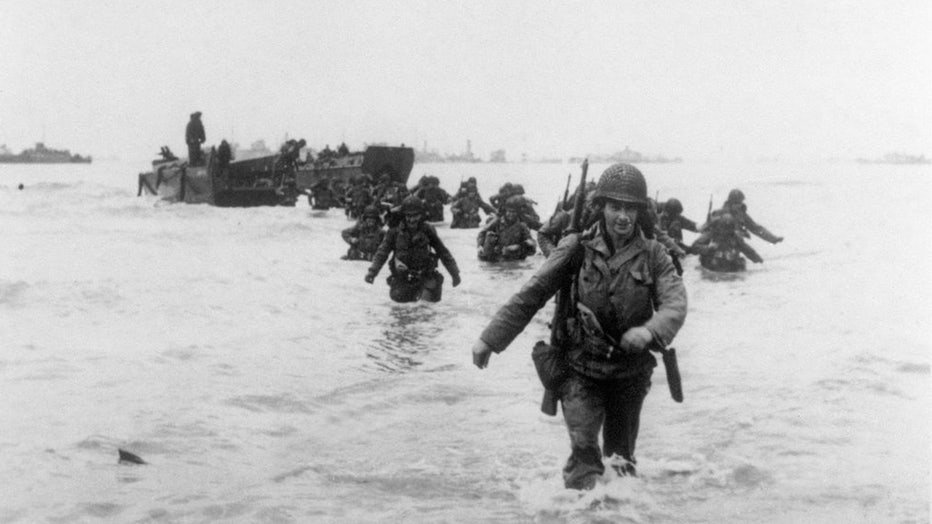
FILE - American troops of the 4th Infantery Division ("Famous Fourth") land on Utah Beach 06 June 1944 while Allied forces storm the Normandy beaches on D-Day. (US National Archives/AFP via Getty Images)
The planning of D-Day
Adolf Hitler's army had invaded France and was aiming to take over all of Europe. The Allies knew that a successful invasion of mainland Europe was key to winning the war.
In January 1944, Eisenhower was appointed Allied supreme commander for Operation Overlord.
Many locations were considered in the planning stages of the invasion. According to the National D-Day Memorial Foundation, Normandy was ultimately chosen with one reason being its many weak sections along the Atlantic Wall, a series of concrete fortifications that Hitler ordered to be built along the coast.
The deception of D-Day
In the months leading up to D-Day, the Allies set up decoy operations to confuse the Germans, according to the foundation. The code name for this deception was Operation Fortitude, and they intended to trick the Germans into thinking the main invasion target was Norway or Pas de Calais in northern France, rather than Normandy.
The Allies even created a "dummy army" called the First U.S. Army Group commanded by Lt. General George Patton, according to military historian and author Flint Whitlock.
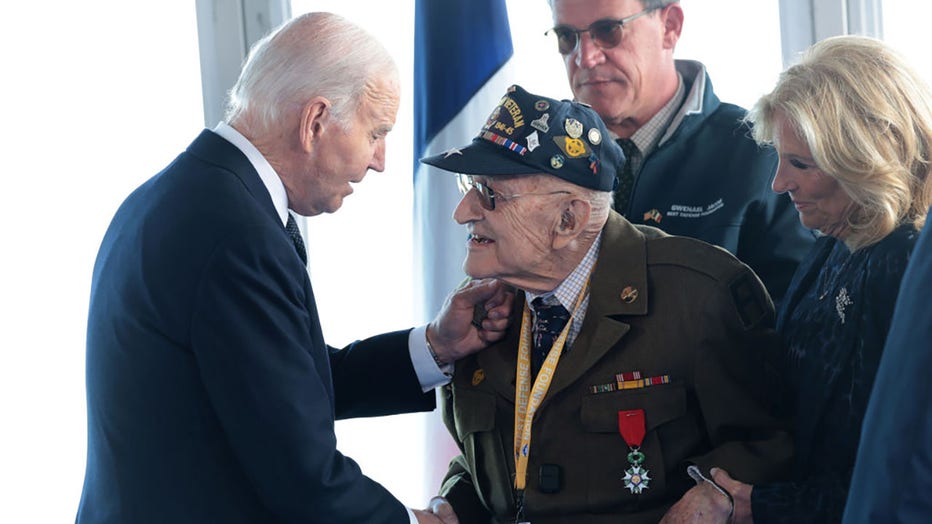
U.S. President Joe Biden and first lady Jill Biden greet American World War II veterans before a ceremony marking the 80th anniversary of D-Day at the Normandy American Cemetery on June 6, 2024 in Colleville-sur-Mer, France. (Photo by Win McNamee/Get
A weather delay
Eisenhower and the Allied leaders postponed the planned D-Day from the beginning of May to June 5, 1944.
However, bad weather a few days before June 5 caused further delay, pushing D-Day to June 6, according to History.com. After Eisenhower's meteorologists forecasted a short window of suitable conditions, he gave the go-ahead for Operation Overlord.
"The weather was still not perfect the day of Operation Overlord, but it allowed the Allies to gain the footing they needed on the European mainland," an explanation reads on the National D-Day Memorial Foundation website.
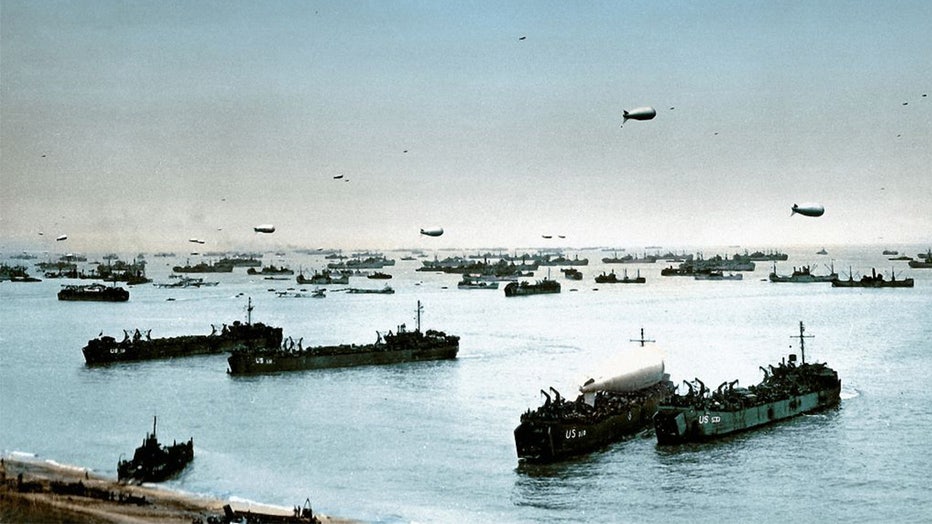
FILE - Allied ships, boats and barrage balloons off Omaha Beach after the successful D-Day invasion, Colleville-sur-Mer, Normandy, France, 9th June 1944. (Galerie Bilderwelt/Getty Images)
When and where
The sea landings started at 6:30 a.m., just after dawn, targeting five code-named beaches: Utah, Omaha, Gold, Juno, Sword. The operation also included actions inland, including overnight parachute landings on strategic German sites and U.S. Army Rangers scaling cliffs to take out German gun positions.
Around 13,000 Allied aircraft, 5,000 ships and boats, and thousands of other vehicles were involved.
After D-Day
By the end of June, the Allies had seized the key port of Cherbourg, according to historians.
Approximately 850,000 men had landed in Normandy, and the Allied forces were set to push farther across France.
By the end of August 1944, Paris was liberated and the Nazis had been removed from northwestern France. This led to the Allied troops later entering Germany, where Soviet troops were advancing in the east.
The invasion of Normandy began to "turn the tide" against Nazi Germany. A History Channel description called it a "significant psychological blow," preventing Hitler from sending troops from France to build up his Eastern front against the Soviets.
By May 8, 1945, the Allies would formally accept Nazi Germany's unconditional surrender.
How many troops died?
A total of 4,414 Allied troops were killed on D-Day itself, including 2,501 Americans. More than 5,000 were wounded.
In the ensuing Battle of Normandy, 73,000 Allied forces were killed and 153,000 wounded. The battle — and especially the Allied bombings of French villages and cities — killed around 20,000 French civilians.
The exact German casualties aren’t known, but historians estimate between 4,000 and 9,000 men were killed, wounded or missing during the D-Day invasion alone. About 22,000 German soldiers are among the many buried around Normandy.
The survivors
While it’s difficult to say exactly how many veterans who participated in the landing at Normandy are alive today, the National WWII Museum estimates less than 1% of the 16.4 million American soldiers who served during WWII are still alive and living in the U.S. as of 2023.
Surviving WWII veterans living in the US by state
The Associated Press and Kelly Hayes contributed to this report. This story was reported from Los Angeles.

